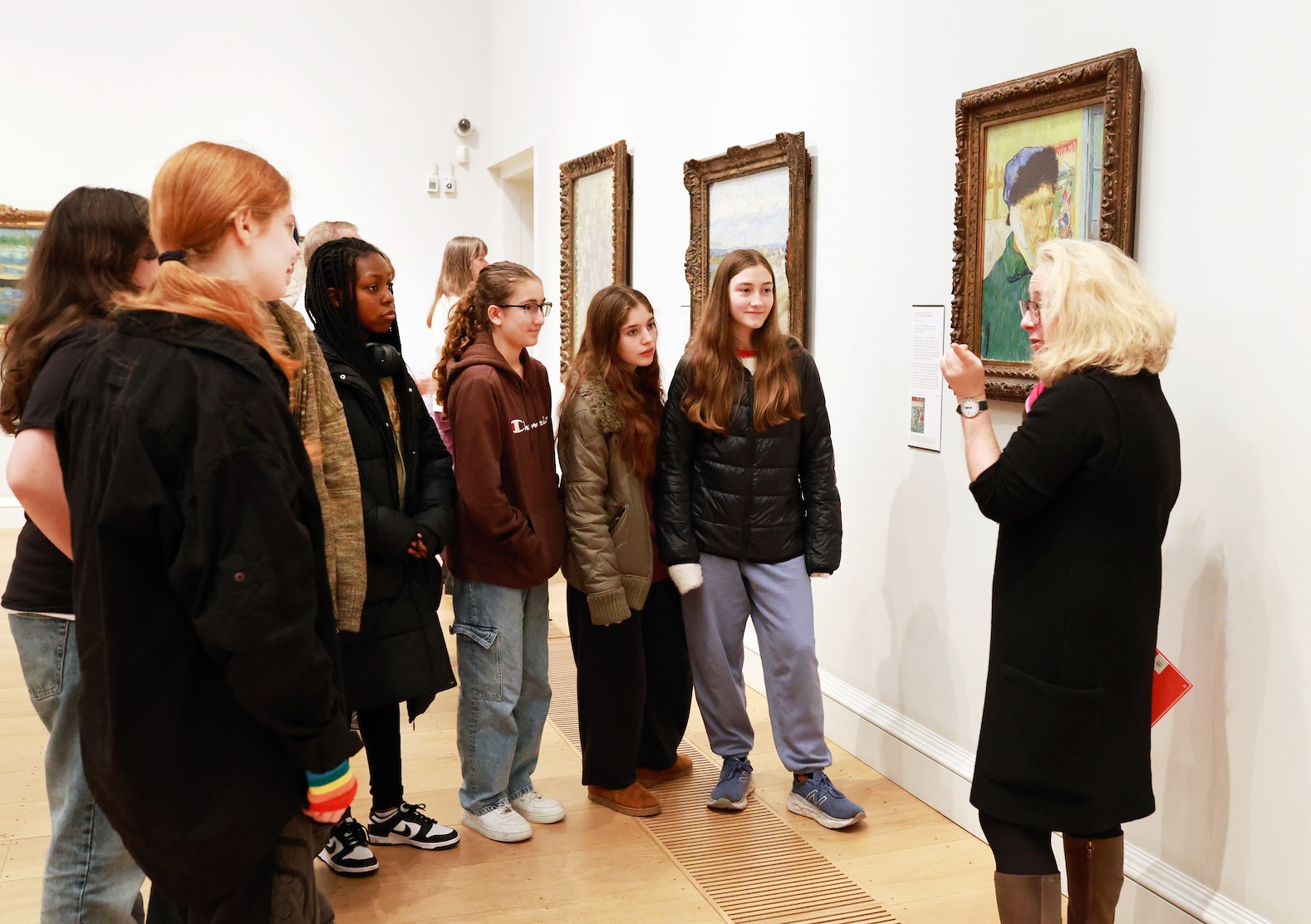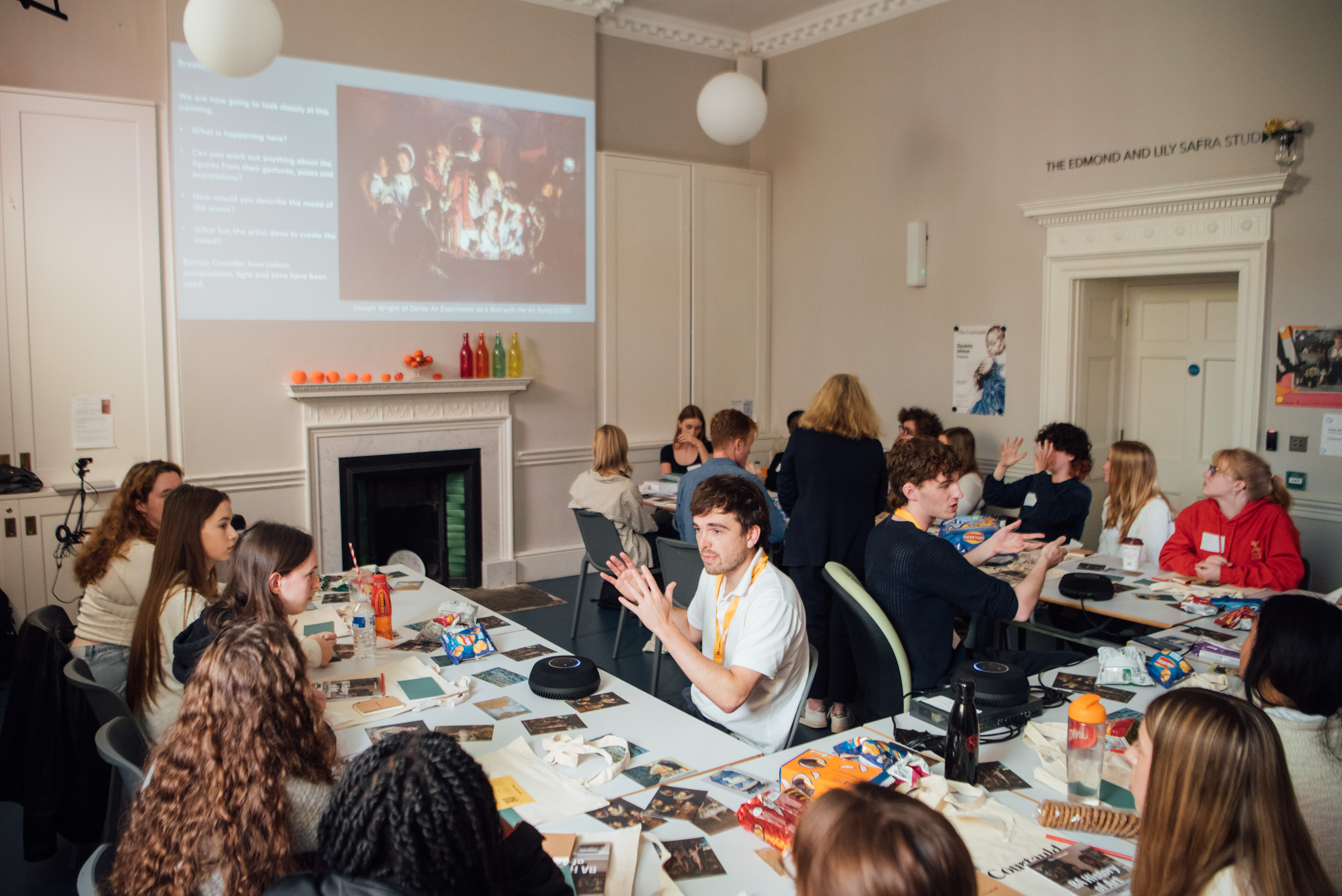
Why Jan van Eyck’s The Arnolfini Portrait is my favourite work of art for teaching
By Jack Dunleavy
Art History Link-Up Lead Teaching Assistant
Sometimes the clearest pictures are the most mysterious. Everything in Jan Van Eyck’s Arnolfini Portrait is easily identifiable. A woman in a green dress with a white wimple, a man in a black hat and furlined cape; a chandelier, a mirror, a big bed, some discarded clogs and a darling little dog. Simple. And yet…why does it all seem so strange? Why does it make so little sense?
According to the Ancient Greeks, the painter Zeuxis was so skilled, so able to make his paintings seem lifelike, that birds would come and peck at his painted grapes. None of Zeuxis’ paintings have survived, but when we look at the beautiful oranges behind Signor Arnolfini, we can imagine what they might have been like.
It’s not just the oranges. All the still life elements in this painting are perfect. Van Eyck paints everything with such precision, it’s as if he were working from photographs. In fact, some people, notably David Hockney, have suggested that Van Eyck must have used a camera obscura (a sort of medieval projector) to paint it. It’s impossible, they say, that someone could paint a chandelier so accurately relying only on their naked eye. Professional jealousy perhaps, but it’s true that Van Eyck was an innovator. It’s even been claimed that Van Eyck invented oil paint.
He certainly mastered the medium. Oil paint is slow drying, which means you can paint fine detail (like the fringe of the man’s cape, or the hair of the dog), easy to blend (look at the variation in colour between the drapes of the woman’s dress) and brightly coloured (look at the red sheets on the bed, over five hundred years old and still fresh!). If this painting still surprises us today, we can only imagine what impression it would have made in the 15th century Flanders.
And yet for all its precision, there are many, many mysteries in this painting. More mysteries than there is space here to list, let alone solve. For me, the main question is this: if Van Eyck was able to paint objects so accurately, why do the Arnolfinis themselves look so alien? It can’t cannot be because people looked differently in the 1400s, and it seems unlikely that Van Eyck tried and failed to paint them accurately. So what is it? Perhaps Van Eyck saw people differently to how we do today. In a world before photography, maybe the exact profile of a sitter was less significant than it is today. If you wanted to show who someone was, you did it with their possession and their gestures. Their physiognomy was an afterthought.
I love this painting because it vividly shows how similar the past was to our own day, and yet how differently it was experienced by people. Like so many great paintings, it shows you something with utmost clarity, and yet makes you ask yourself…what is it I see?
Art History is under threat
We believe art history should be for everyone, however fewer than 1% of state supported secondary schools offer Art History A Level. As a result, there is a lack of diversity in the arts sector and an increasing skills shortage. We are the only charity offering formal Art History teaching to school-aged students from all backgrounds. Your financial support will ensure that everyone has an opportunity to study art history: together we can transform the future of the arts.






